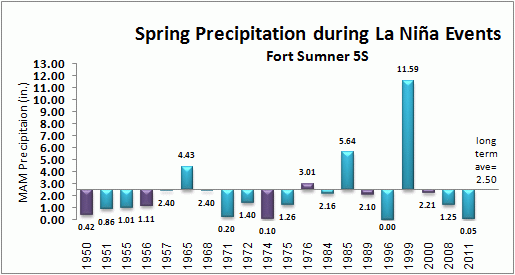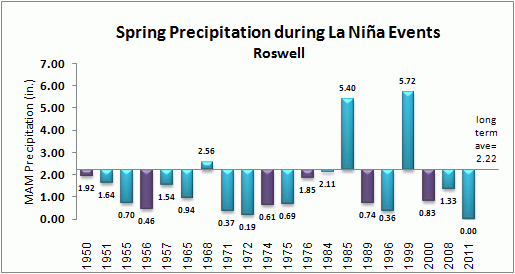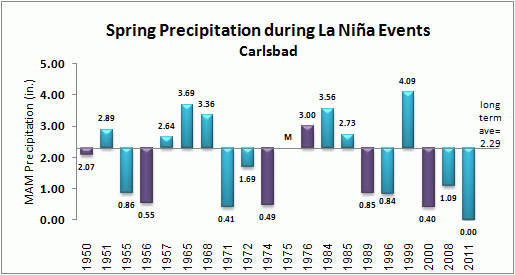
| Southeastern Plains |
| March-April-May Precipitation |
|
(Return to Main Feature) or go to CD1 | CD2 | CD3 | CD4 | CD5 | CD6 | CD8 |
|
Strong La Niña events impact the spring precipitation across southeast New Mexico, resulting in 48% to 60% of the long term average precipitation. Results for Climate Division 7 (and also Climate Division 3 and the eastern portion of Climate Division 2) indicate that 1999 is an example of a year that does not follow the "dry" La Niña trend. The period from the last day of April through much of May in 1999 was particularly wet over eastern New Mexico. |
|
A description of the graphs is located at the bottom of the page. |
 |
| Percent of Longterm Average for all La Niña Events = 87% , for strong La Niña Events = 60% |
 |
| Percent of Longterm Average for all La Niña Events = 67% , for strong La Niña Events = 48% |
 |
| Percent of Longterm Average for all La Niña Events = 81% , for strong La Niña Events = 54% |
|
Precipitation values for 3-month periods during 19 La Niña Events since 1949-50 are plotted with respect to the long term precipitation average, listed to the right of the graph. The precipitation totals for each 3-month period are plotted above or below each bar. Years for which the La Niña Event was considered to be strong are colored in purple. "M" represents a 3-month period with missing data. Finally, the percents of longterm normal for all La Niña events and for the strong La Niña events are listed below each graph. |